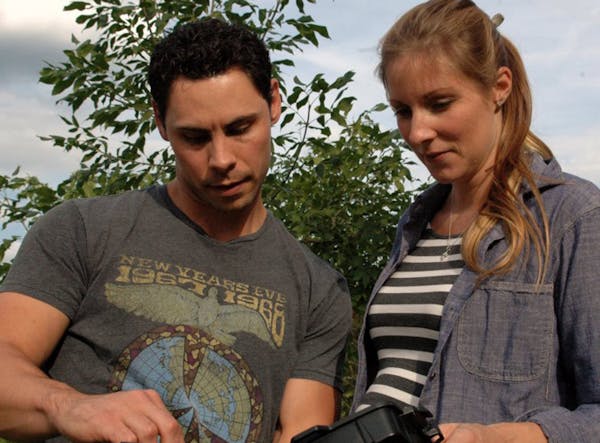What's the best place in Minnesota to shoot a whitetail when the state's firearm deer season opens Saturday?
From your hunting blind or deer stand, of course.
As any hunter worth his or her blaze orange clothing can attest, whitetails aren't distributed equally across Minnesota's landscape. There are areas with high densities, low densities and many more in between.
The accompanying data, which shows deer harvest per square mile in 2012, indicates the wide disparity, ranging from more than nine deer per square mile killed in permit area 602 (a chronic wasting disease zone with no bag limits) to 0.06 per square mile in permit area 117 in the Boundary Waters Canoe Area Wilderness (where there are few deer and fewer hunters).
The statistics generally reflect where deer densities are high and low, but there are other factors. "It also reflects our management strategies, too,'' said Leslie McInenly, Department of Natural Resources big game program leader. Bag limits and the availability of antlerless deer vary, depending on that management strategy. And hunting pressure affects the per-square-mile harvest, too.
That said, here's a look at five permit areas in five different regions that stand out:
Northwest
Permit area 210
Harvest: 3.65 per square mile
This permit area near Erskine, Fosston and Bagley has one of the highest harvest rates in the northwest, and, of course, there's a reason. It has the right mix of agriculture, woods and wintering cover, said Shelley Gorham, DNR area wildlife manager in Bemidji.
The eastern part of the area is in the highly productive transition zone between field and forest. "That really provides good habitat for deer,'' Gorham said. "That transition zone is where we find higher numbers of deer on the landscape.''
The western portion is more agricultural, with fields of corn and soybeans dotted with many lakes; the east is heavily forested. More than a dozen wildlife management areas provide habitat and public hunting opportunities. Gorham said there might be another reason for 210's high deer harvest: Hunters who normally hunt in neighboring "lottery" areas might go to 210 to shoot a second deer.
Northeast
Permit area 178
Harvest: 3.89 per square mile
This sprawling area extends south from the Iron Range towns of Aurora, Virginia, Chisholm and Nashwauk, and includes vast amount of public forest, including Cloquet Valley State Forest. Though it's in northeastern Minnesota, it has a mix of farmland and forest that resembles a transition zone, meaning it has better habitat than some areas farther north and east.
"There's also a lot of black spruce bogs; that's habitat too,'' said Dawn Plattner, DNR assistant area wildlife manager. "And it's outside the moose zone,'' she said. That means it is being managed to hold more deer per square mile — 14 — than other areas in the arrowhead, where deer densities are kept lower because of the moose population there.
Plattner said the many open areas in the zone also give hunters better visibility than nearby heavily forested permit areas, which can boost harvest.
North-central
Permit area 157
Harvest: 6.35 per square mile
This popular area, which runs from Mora to near McGrath and from Lake Mille Lacs to Hinckley, had the second-highest firearms deer harvest per square mile in the state last year. There's a large amount of public land, including the Snake River State Forest.
This is part of the state's transition zone, where whitetails thrive.
"It's a good combination of farm country habitat, with enough forest [for deer] to hide in,'' said Ted Dick, DNR area wildlife manager. "It supports good numbers of deer.''
Southwest
Permit area 286
Harvest: 1.27 deer per square mile
The southwest whitetail population has been low for years, so low that in 2009 hunters urged the DNR to impose more restrictions on the doe harvest to boost numbers. The agency did that, and deer the population has rebounded somewhat. Among the top areas in the southwest last year was permit area 286, in the Tyler-Ivanhoe area.
"There's a lot of public land out there,'' said Amber Knutson, DNR assistant area wildlife manager in Marshall. And that means habitat. "That's the driving factor,'' she said. The topography helps provide that habitat, too. "Part of it is hilly coteau — Buffalo Ridge — and some areas are too steep to farm. And a bunch of small streams run through it, with a lot of woody cover.''
The deer population there has rebounded. Last year, only 100 antlerless permits were available. This year, because of the increased deer population, the DNR issued 600 antlerless tags. "It seems like there's a ton of deer,'' Knutson said.
Southeast
Permit area 346
Harvest: 7.25 deer per square mile
"It has perfect deer habitat,'' said Don Nelson, DNR area wildlife manager in Rochester. "It's fairly close to the Mississippi River; it's in the heart of bluff country. You just have real good mix of agricultural land and forest land, and tons of edge. You have corn, alfalfa, soybeans; the forest is mostly oak, so there's acorns for them to eat. And the limestone bedrock provides good minerals for deer.''
Most of the land is private, and two-thirds of the hunters hunt in the A season. It routinely ranks in the top 10 permit areas for harvest.
Doug Smith • dsmith@startribune.com

Scoggins: Hot Suns loom, and Finch feels the heat
Israeli soccer facing Palestinian calls for action by FIFA at annual congress

Will Vikings look for long-term solution at running back in the draft?

